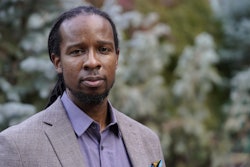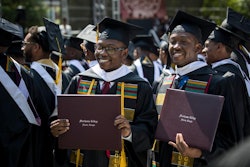Nation’s Public Schools Have Become Resegregated, Study Finds
CAMBRIDGE, Mass.
Public schools are slipping back into racial segregation, according to a study by The Civil Rights Project at Harvard University. Released last month on the eve of the Martin Luther King Jr. holiday, the nationwide analysis of enrollments from the 2000-2001 school year found a growing number of Black and Latino students attend schools where the majority of students are minorities. Similarly, White students are found increasingly likely to attend schools where most of their classmates also are White.
“Martin Luther King’s dream is being honored in theory and dishonored in the decisions and practices that are turning our schools back to segregation,” says Dr. Gary Orfield, co-director of The Civil Rights Project and a professor of education and social policy at the Harvard Graduate School of Education.
In the South, where civil rights legislation aimed at integrating schools had the most dramatic results in the 1960s and ’70s, the process of resegregation has been most rapid, the study showed.
“The South went from being the most segregated region in the country to being the most integrated,” says researcher Erica Frankenberg. “Now the reverse is happening.”
In 1964, a decade after the U.S. Supreme Court ordered all schools desegregated in Brown v. Board of Education, 98 percent of Blacks in the South still attended totally segregated schools.
By 1988, 44 percent of Black students in the South attended schools that were majority White. In 2000, however, just 31 percent of Black students went to schools where Whites made up more than half the enrollment.
“It doesn’t mean that everyone in the South wants to go back to the way things were in 1963,” Frankenberg says. “This is a more subtle form of segregation. In some ways, that makes it more difficult to combat.”
The researchers blame the resegregation trend on a series of court decisions, beginning with the 1991 Supreme Court ruling Oklahoma City v. Dowell, which backed away from the court-enforced desegregation laws of the 1960s.
Although resegregation has been most rapid in the South, the study shows schools that there remain far more integrated than those in the Northeast and on the West Coast, where socioeconomic divisions between city and suburb create a different kind of segregation.
New York has the most segregated schools for Black and Hispanic students, according to the report. Just 13.3 percent of the state’s Hispanic students and 13.6 percent of its Black students attend majority White schools.
Meanwhile, a growing number of White children across the nation are enrolled in schools that are overwhelmingly White, the study showed. The average White student in America attends a school where 80 percent of their classmates also are White.
© Copyright 2005 by DiverseEducation.com


















